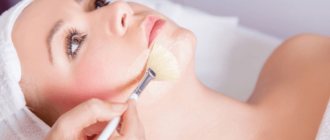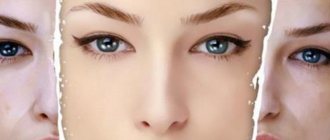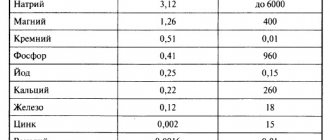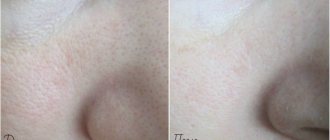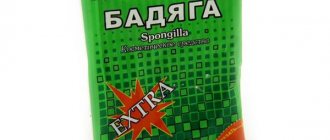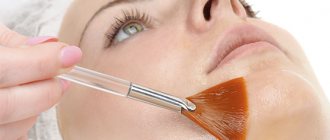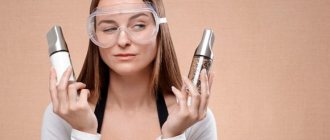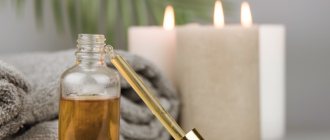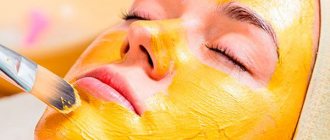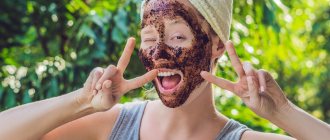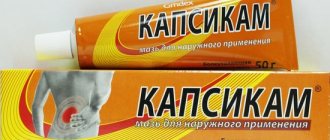Many women who systematically care for their faces are interested in the question: do they need lip peeling at home or in a salon? The answer is definitely positive, because the skin in this area is constantly exposed to negative effects from weather conditions, decorative cosmetics and other factors. All this together leads to a deterioration in the appearance of the sponges and makes it difficult to apply absolutely any cosmetic or medicinal product - it simply rolls off. Which peeling will be more effective for lips - done in a salon or prepared by yourself?
Operating principle and effectiveness of lip peeling
Lip peeling is the exfoliation of the keratinized layers of the epidermis in the mouth area.
Is this procedure really necessary for the lips? The skin of the lips is affected by external factors even more than the face. The integument here is devoid of sebaceous glands. It is for this reason that in cold, windy, frosty weather or under the sun's rays they lose their softness, become rough and covered with small cracks. Further - more - the lips begin to peel off, the effect of “chapped” lips sets in with their repulsive peeling scales and wrinkles. In an effort to somehow save the situation, girls generously apply gloss or lipstick to their lips in order to disguise the unpleasant sight. The result is usually disappointing - lips look even more untidy and unkempt.
The attractiveness of sponges cannot be restored using only balms or special creams. To restore softness and smoothness of the skin, it is necessary to improve blood microcirculation and the regenerative ability of cells. This effect is ensured by a special procedure called peeling. This manipulation must be carried out regularly - at least once a month.
You can do lip exfoliation at home or sign up for the procedure at a salon. The benefits of home cleaning include saving time and money while being highly effective.
Additional advantages of sponge peeling with an exfoliating effect at home are:
- No acids or other chemical-based ingredients.
- Availability in terms of selection of ingredients.
- Natural exfoliation of dead cells.
The results of using home exfoliation are:
- Bactericidal and refreshing effects.
- Softening and moisturizing the skin.
- Rejuvenation of the integument
- Effectively eliminates dryness, flaking and wrinkles.
Lip skin care after exfoliation
After exfoliation, it is necessary to use moisturizing and nourishing balms on a natural basis. You can use various vegetable oils; almond, peach, jojoba, shea, and coconut are considered the best.
Lip care rules:
- within 2 hours after the procedure, you should avoid drinking hot and cold drinks, spicy and salty foods;
- refrain from kissing for several hours;
- while you sleep, treat your lips with nourishing oil;
- Do not use matte lipsticks with a drying effect for about 2 days;
- Before going outside, apply a balm with beeswax, which protects thin skin from aggressive environmental influences.
Types of peelings
Lip peeling is considered a superficial cleansing procedure.
There are 2 main types of lip exfoliation:
- Chemical. It is performed using a ready-made gentle preparation with a mild effect. In the process of creating a product, you cannot do without the necessary components, which include vitamin A, tocopherol, natural abrasive ingredients and an antibacterial complex. After using this product, the sponges become more elastic and acquire a natural, healthy shade.
- Mechanical. It is a massage effect on rough cells using scrubs or delicate abrasives.
For your information. Components for both types of exfoliation can be found in pharmacy chains or on store shelves. Therefore, preparing for such home cleaning will not be difficult.
Recipes
So, we've sorted out the basics. Now we can talk about the recipes themselves.
Honey
Honey has a positive effect on the body. An allergic reaction to it is very rare. For its excellent properties, it is so valued by doctors of all fields. Is it possible to do peeling with it? Yes. The recipe is very simple. A candied product is suitable for this. In this case, no further additional ingredients are required.
Honey and sugar
This mixture is also great. Add 1 or 2 parts sugar to 1 part honey. The mixture is thoroughly mixed and it is ready for use.
Sugar and butter
For peeling you need coarse sugar, but fine sugar will do. To prepare the mixture, you need to mix 1 part of sugar with 1-2 parts of any oil: sunflower, olive or even butter. The product is considered ready after it has been brought to a homogeneous consistency. To give it a pleasant aroma, add 3 drops of any essential oil. Soothing scents work well for this. The benefits of peeling with sugar and essential oils are well felt when using the product before bed.
Sugar and aspirin
Widely known recipe. Only in this case is fine white sugar selected. The ratio is 1 to 1. Of course, the aspirin tablet must first be crushed. After mixing, you need to add a few drops of oil and a couple of drops of glycerin.
Read also: Facial care cosmetics
Adding cinnamon
This element increases blood circulation and gives renewed skin a natural color. It can be added to almost any composition. But you can’t be too zealous either. For 1 part of any ingredient add 0.5 parts of cinnamon. If there is any damage on the lips or corners of the mouth, then it is better to avoid using it.
Salt
A less popular component of the mixture than sugar. It has an increased exfoliating effect. This means that peeling needs to be done less often - no more than once a week. The composition looks like this:
- 1 part salt;
- 2 parts of any oil;
- 1-3 drops of essential oil.
Glycerol
Can be an excellent oil substitute. Has the best softening effect. Adds smoothness and shine. The recipe is excellent for small cracks, but the exfoliating effect of the mixture is reduced. This is a good option for sensitive skin.
Are there any contraindications and side effects?
At its core, lip peeling is one of the least aggressive and most harmless cosmetic procedures. However, there are contraindications to its implementation:
- Lip cracks (deep, including “jams”).
- Herpes.
- Open or slightly healed wounds.
- Infectious diseases.
- Inflammations, ulcers.
Advice. Before exfoliation, lips should be examined. If you notice one or more of the problems listed above, you should visit your doctor. Only after complete recovery can abrasive components be used.
What are the indications for this procedure?
Lactic acid is produced by Lactobacillus bacteria during the breakdown of glucose.
Thus, being formed from glucose, a natural substance for the body, in most cases, milk peeling does not cause rejection or allergic reactions. Depending on the concentration, lactic acid can act as a superficial (which is more common), superficial-medium and medium peeling. Indications for superficial and medium peels are somewhat different. The most gentle is superficial, indicated for:
- hypersecretion of sebum;
- superficial non-inflammatory comedones and acne;
- hyperkeratosis;
- skin dehydration;
- initial signs of photo- and chronoaging.
Medium peeling works in the deep layers of the epidermis and is relevant for more pronounced changes in photoaging, scarring and post-acne.
Top 10 recipes for lip peels at home
Despite the wide selection of store-bought exfoliants, lip peeling can be done at home using a homemade product.
For this purpose, you can use one of the recipes for peeling sponges at home:
Express peelings
Recommendation. Below is the component composition of each of the home exfoliants. These products are quick to use - after mixing the components, the mixture is applied to the skin, massaged for no more than 5 minutes, then the lip peeling is washed off.
Coffee exfoliant:
- Ground coffee - 0.5 tsp;
- olive oil - 1 tsp.
Curd-oat exfoliant:
- Cottage cheese - 1 tbsp. l.;
- Oatmeal - 1 tsp.
Cinnamon peeling:
- Cinnamon - 1 pinch;
- Peach oil - 0.5 tsp;
- Cane sugar - 1 tbsp.
Sugar exfoliant:
- Sugar - 1 tsp;
- Olive oil - 1 tsp.
Aspirin exfoliant:
- Aspirin - 1 tablet;
- Sugar - 1 tsp;
- Glycerin - 3-5 drops.
Creamy salt peeling:
- Salt - 1 tsp;
- Cream 10% - 1 tsp.
Almond scrub:
- Almonds - 2 pcs.;
- Glycerin - 5 drops.
Soak the nuts in water and leave overnight. In the morning, grind them with a coffee grinder and combine with glycerin. Use as directed.
“Long-lasting” peelings
Recommendation. The technique for using these types of peelings is no different from the previous list. The only difference is that the exfoliants below do not need to be washed off immediately - it will take some time, sometimes the whole night, to be effective.
Honey-sugar peeling:
- Honey - 1 tbsp. l.;
- Sugar (cane) - 2 tbsp. l.
Combine the ingredients and apply the paste-like mixture to your lips. Leave for half an hour, remove with a napkin.
Honey-soda peeling:
- Honey - 1 tsp;
- Soda - 1 tsp;
- Olive oil - 0.5 tsp.
Leave the applied mixture for 20 minutes, rinse off.
Lemon Exfoliant:
- Lemon juice - 1 tbsp;
- Castor oil - 1 tbsp. l.;
- Glycerin - 2 drops.
After mixing, apply the composition on the lips overnight. When you wake up, remove any remaining product.
Advice. At the end of any peeling, apply a moisturizing balm over the skin of your lips.
Review of popular products from well-known manufacturers
When choosing products for scrubbing in a store, you first need to decide on the desired result. For example, the oils contained in the composition promote skin regeneration and give it a natural tone, herbal extracts soften the skin, and particles of the scrubbing component exfoliate dead cells.
Industrial scrubs are divided into:
- Hypoallergenic;
- Natural - based on natural ingredients;
- Active - the product contains acidic substances that have a deep cleansing effect.
The most popular lip scrubs
- Precious OiI Eveline – pink scrub lipstick. According to the manufacturer, the product has a comprehensive effect: exfoliates, smoothes, restores the epidermis, corrects the lip contour and adds elasticity.
- Bubble Gum Lust is an inexpensive lipstick alternative. Consists of colored sugar with the addition of active compounds.
- Lip Scrubtious MAC is a sugar scrub with a soft texture. Has the property of melting upon contact with lips.
- Kiss kiss Tony Moly is ideal for protecting lips in winter. Perfectly moisturizes the skin and prevents drying.
- Nanda coffee scrub – has a creamy structure. Ideal for use for dry skin types, it gives softness.
The modern cosmetology market offers a wide selection of scrubbing products. Cosmetologists strongly recommend conducting a special test for an allergic reaction before using the selected product.
To do this, first apply a little cleanser to your elbow, leave it for a while and rinse with water. If hyperemia or swelling appears on the treated surface within 24 hours, you should refrain from using the tested product.
Recommendations from cosmetologists
The applied lip peel will be much more successful if used correctly. To do this, you should take on board some advice from leading cosmetologists:
- As an additional remedy, you can use a toothbrush with delicate bristles. Before applying the exfoliant, moisturizer is distributed onto the surface of the sponges. This massage is performed with maximum delicacy for no more than 2 minutes.
- The peeling mixture should be prepared in advance (if it is not one of the ready-made care products).
- The product should be distributed onto clean skin.
- During the process of mechanical exfoliation, the lips are massaged with gentle circular movements for 3-5 minutes. The largest number of “outdated” cells accumulate in the corners of the mouth, so massage should also be done around the lips.
- When applying a ready-made composition containing acids, the product should be kept for no longer than the period specified in the instructions.
- The remaining exfoliant is washed off with warm water.
- An obligatory step is the application of a moisturizing composition.
Answers on questions
Is it possible to exfoliate lips twice a week?
Not necessary. It takes two to three days for the skin to recover after treatment. The ideal use of the cleansing procedure is once a week.
Can I go outside immediately after lip peeling?
Not recommended. The treated area of skin needs strong nourishment, so it is advisable to sit at home for a while. For quick recovery, use a moisturizer.
What time of day is best to do the procedure?
It is best to do a cleansing session before bed. Overnight, the delicate skin of the lips will “rest”, which will allow you to maintain the desired effect for a long time.
How to use a lip scrub
It is always advisable to make your homemade lip scrubs in small batches. They will stay fresh and last for about a week. Store your scrub in clean, dry, old lip balm. It is recommended to sterilize the container by leaving it in hot water for a while to prevent germs. Place this case in the refrigerator and use it within a week.
Use a clean, soft washcloth to gently massage the mixture onto your lips, using circular motions. Rinse the mixture with warm, not hot, water—cup your hands and splash the water over your mouth until it runs clean. Pat dry lips and apply Vaseline or moisturizing lip balm to moisturize lips.
- You can use white or brown sugar, but not powdered sugar.
- Coconut oil is a delicious alternative to olive oil.
- The longer (and harder) you rub the mixture onto your lips, the more it will exfoliate. Do this in about a minute, maximum. Too much exfoliation can make your lips feel sore or chapped.
- Oil-based scrubs are great for dry skin because they are very hydrating.
Advantages of this procedure
Peeling in cosmetology involves influencing the skin using chemical reagents that create controlled damage to individual layers of the skin. As a result of specific damage and subsequent regeneration, a number of positive changes occur in tissues:
- improving the appearance of the skin;
- increasing elasticity and tone;
- elimination of fine wrinkles, acne scars and ingrown hairs.
The overall result expected from a chemical peel is soft, supple skin that appears more youthful, with fewer wrinkles and age spots. The most common classification of chemical peels is by depth. On this basis they are divided into:
- superficial (exfoliation – the beginning of the stratum corneum; superficial – the entire stratum corneum);
- middle (light-medium - up to the basal layer; deep-medium - basal layer);
- deep (dermis - performed in a hospital).
Lactic peeling refers to chemical peels that rejuvenate the skin by activating the regeneration of the skin due to the action of lactic acid in different concentrations at different depths of the epidermis and dermis. Lactic acid has a number of positive effects:
- exfoliating;
- moisturizing;
- regenerating;
- whitening;
- anti-inflammatory;
- antibacterial.
Under physiological conditions, it is part of the skin's natural moisturizing factor (NMF).
Superficial peeling affects the entire stratum corneum of the skin, which contains a natural moisturizing factor, the reduction of which causes a feeling of dryness and a flabby appearance. Under the influence of lactic acid, the level of the epidermis decreases and the thickness of the dermis increases, which makes the stratum corneum more elastic and elastic. Strengthening the dermis in this case leads to a lifting effect, improves the protective properties of the skin, and due to the exfoliating effect, refreshes the complexion and reduces hyperpigmentation.
